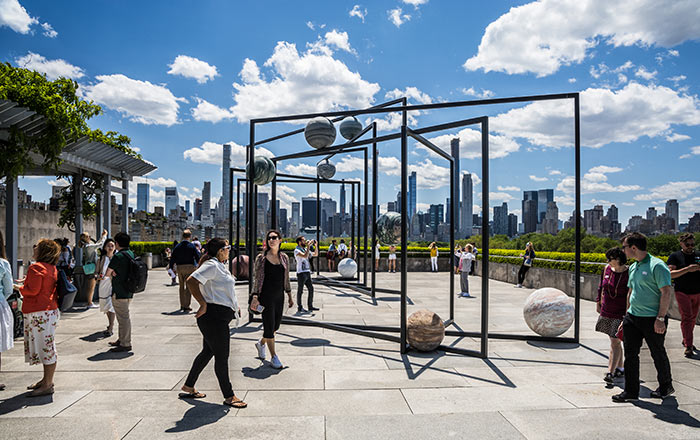Architectural Model for the Space Theater for Woodstock
Frederick Kiesler American, born Austria-Hungary, present day Ukraine
Not on view
This model for the unbuilt Space Theater resulted from an architectural competition to create flexible art and event space for the community of Woodstock in upstate New York. Although the project was never realized due to budgetary restrictions stemming from the Great Depression, this rare surviving model reveals just how detailed Kiesler’s concept had been.
The project integrates several aspects of Kiesler’s career, including theater and set design, art gallery and installation environments, sculpture, new media technologies, and even larger-scale community architecture planning. His vision for the Space Theater emphasized the building’s potential to be adaptable and versatile, serving as a venue for theater and opera productions, film screenings, circus and dance performances, as well as sports events and social gatherings organized by the local community. As a result, the size and format of the building could be modified to accommodate from 80 to 2,000 people. It featured two distinct spaces: a large amphitheater, and a smaller theater on the opposite side of the structure, between which there was to be one central stage with a changeable partition. The construction itself consisted mainly of prefabricated components such as tubular metal supports, wire mesh, and weather-proofed sailcloth. The intention was for the structure to be easily assembled on site, and within a period of only two weeks, allowing the town of Woodstock to erect and demount the venue almost spontaneously.
Created just a few years after Kiesler immigrated to the United States from Europe, this model is one of the few remaining from his early architectural projects. Significantly for an unbuilt project, many additional components survive alongside the main model, including various "plug-and-play" interchangeable architectural components that showcase various modes of assembly and installation. These provide a sense of how the model would have been used as a tool for demonstrating the building’s functional flexibility, and also indicate the performative nature of the object itself. Even rarer still, is the survival of the original accompanying suitcase that Kiesler used to store and transport the model from the very beginning of the object’s creation until his death. Luggage labels indicate that this was the very same suitcase that Kiesler took on his original ocean liner passage across the Atlantic, perhaps indicating the importance that this unbuilt, long unrealized, project held for him throughout the remainder of his life.
